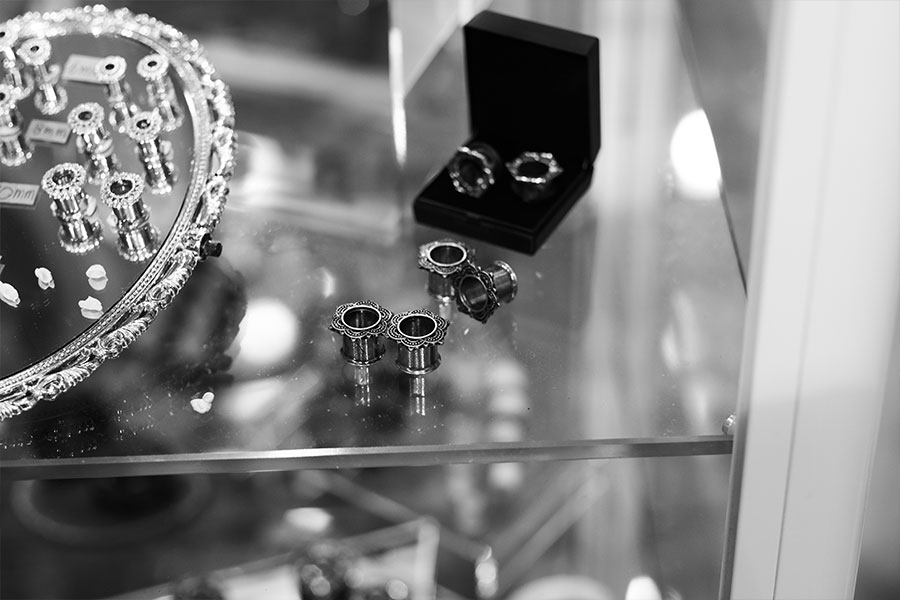The piercing that you just placed will most likely hurt for the next few days. After the first few days it should be a bit less sensitive. If your piercing does keep hurting you a lot, please contact us or your physician.
Do not remove the titanium jewellery that was placed during the healing process unless you have a severe allergic reaction.
Cartilage piercings take a bit longer to heal than piercings on fleshy parts, like the earlobes. You can expect it to take 6 to 9 months for your new piercing to be completely healed. It really depends upon your own healing process because everyone’s body works a bit differently.
If you tend to heal slowly when you get a wound, then treat your cartilage piercing like it isn’t fully healed for at least 6 months. You won’t be able to tell by looking at it because these piercings heal on the external flesh first.
The cartilage inside may still be healing, but you can’t see it. It’s a good idea to be very gentle with your cartilage piercing and continue cleaning it daily for a full year after getting the piercing.To ensure a good healing process without complications, try to follow the following guidelines:
* Do not touch the piercing with your hands
*Clean your piercing twice a day with a saline solution. Firstly, make sure your hands are clean. Wash your hands with an antibacterial soap and dry them with a paper towel. Vaporize a bit of saline solution on a cotton swab and then apply it gently on each side of the hole. Gently move the piercing with the shape of your piercing so that the solution also enters the hole.
*Avoid sleeping on the piercing. Even if your piercing does not hurt anymore, try not to sleep on it. The pressure of sleeping on your piercing during the healing process may cause bumps or migration. Do you move and turn a lot in your sleep? Try using a “U” shaped pillow. The “U” shaped travel pillow will allow your ears to stick out a little more than a regular pillow. With you ear placed in the hole, there will be no pressure on the piercing. Sleep with your neck in the middle of the “U” in order to sleep comfortable through the night.
*Be careful using hair products. No hair products may enter the wound.
* Do not cover the piercing with band aids. The band aid will put pressure on the wound; which might cause irritation and/or migration.
*In the first 2 months weeks, avoid submerging the piercing in unhygienic bodies of water such as lakes, pools, hot tubs, etc.
*Avoid cleaning with Betadine, alcohol, hydrogen peroxide, or other harsh soaps, as these can damage cells. Also avoid ointments as they prevent necessary air circulation
*When you pierce the cartilage it will always swell up a little. The swelling is part of the healing process. However, you do always need some extra space to still be able to clean it. If your piercing jewellery does become too tight, come back and get it enlarged by your piercer.. Do not try to remove it yourself, you will most likely damage the wound.
If you got pierced with a ring; the ring might put a bit too much pressure on the wound. If you notice the ring being too tight and feel pressure, come back to get it changed into a bar.
*Cartilage bumps may appear during the healing process. A cartilage bump is a small fluid bump around your piercing. Many people confuse this with a cartilage infection. An infection should be treated a lot different than a cartilage bump. If your cartilage is infected you will have severe swelling, extreme redness and discretion of puss. If this appears, please contact your piercer and physician. In most cases it is necessary to treat it with an antibiotic cream (affusinezuurcreme). You will also have to get the jewellery enlarged. Removing the piercing can allow the wound to close, trapping the infection within the skin. For this reason, it is advisable not to remove an earring from an infected ear unless advised by a doctor or professional piercer.
*At Queen of Rings we offer 9 months of free advice and help. You are always welcome to come in and get your piercing checked. In a case of infection or a keloid, we will always refer you to your physician



